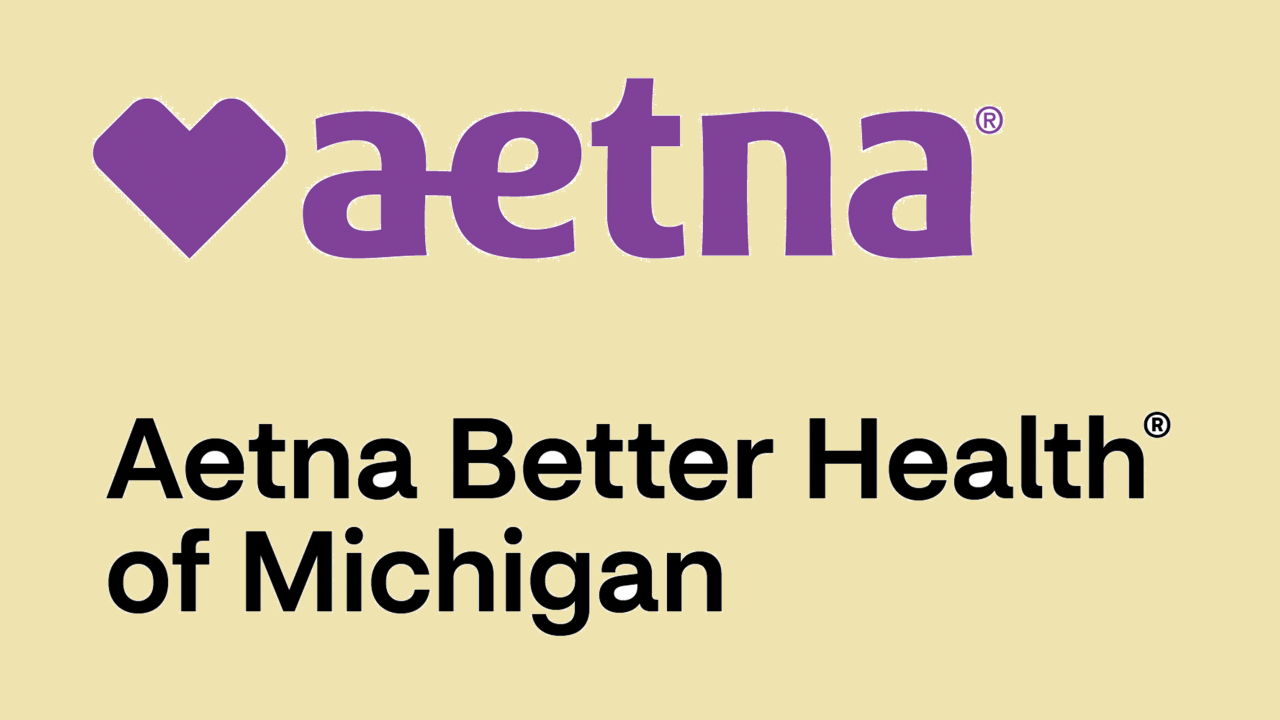Stepping into the world of Aetna producers, this guide delves into the intricacies of this vital role within the health insurance industry. From understanding the responsibilities and compensation structures to navigating the competitive landscape and utilizing essential tools, we’ll cover everything you need to know to thrive as an Aetna producer. This comprehensive resource is designed to provide a deep dive into the industry’s trends, challenges, and opportunities, offering actionable insights for success.
The evolving healthcare landscape presents both challenges and opportunities for Aetna producers. This detailed exploration will illuminate the key factors impacting their performance, from understanding the target client base to mastering essential performance metrics. The guide further unpacks essential tools and resources, highlighting the critical role of technology in modern sales strategies.
Aetna Producer Overview

Aetna producers play a crucial role in connecting individuals and groups with the company’s health insurance products. They act as intermediaries, guiding clients through the process of selecting the best coverage options and navigating the complexities of health insurance. This overview details the various aspects of this important role, including responsibilities, types of producers, sales strategies, and compensation structures.
Role of an Aetna Producer
Aetna producers are responsible for selling and servicing health insurance plans to a variety of clients. This encompasses identifying client needs, presenting suitable Aetna plans, and guiding clients through the application process. Beyond initial sales, producers often maintain ongoing relationships with their clients, addressing questions, and ensuring satisfaction with the chosen coverage.
Responsibilities and Duties
Aetna producers have a diverse set of responsibilities, including but not limited to:
- Identifying and understanding client needs, such as their family size, health conditions, and budget.
- Presenting various Aetna health insurance options, highlighting their benefits and features.
- Providing comprehensive information about plan details, including coverage amounts, premiums, and deductibles.
- Guiding clients through the application and enrollment process.
- Answering client questions and addressing concerns throughout the policy lifecycle.
- Maintaining accurate records of client interactions and policy details.
Types of Aetna Producers
Aetna employs producers in both individual and group markets. Individual producers typically focus on selling plans to single people or families, while group producers concentrate on selling coverage to employers and organizations. Each type requires specialized knowledge and skills to effectively serve the unique needs of their respective clientele.
Sales Strategies
Common sales strategies employed by Aetna producers include:
- Building strong relationships with potential clients through networking and referrals.
- Utilizing targeted marketing strategies to reach specific demographics and address their unique health insurance needs.
- Emphasizing the value proposition of Aetna plans, highlighting competitive pricing and comprehensive coverage.
- Demonstrating expertise in health insurance products and regulations to instill confidence in clients.
- Providing ongoing support and service to clients after policy purchase to ensure satisfaction.
Compensation Structure
The compensation structure for Aetna producers varies based on the specific role and performance. Many producers receive a combination of salary and commission, with commission rates often tied to sales volume or policy premiums. Individual producers often rely heavily on commission-based income, whereas group producers might receive a higher base salary, supplemented by commission or bonus structures.
Comparison of Individual and Group Producers
| Characteristic | Individual Producer | Group Producer |
|---|---|---|
| Target Market | Individual consumers and families | Employers and organizations |
| Sales Focus | Selling individual policies | Negotiating group plans |
| Responsibilities | Understanding individual needs, handling applications | Negotiating contracts, handling employer relations |
| Compensation | Primarily commission-based | Combination of salary and commission |
| Skills | Strong communication, client interaction skills | Negotiation, relationship building, contract management |
Aetna Producer World Landscape
Aetna’s success in the health insurance market hinges on understanding and navigating the complexities of the producer landscape. This involves recognizing key competitors, market trends, the evolving healthcare environment, and the regulatory framework. Understanding these factors empowers Aetna producers to effectively serve clients and maintain a competitive edge.
Key Competitors in the Health Insurance Marketplace
Aetna faces significant competition from other major health insurance providers, as well as smaller, specialized insurers. These competitors employ diverse strategies, including price adjustments, network expansion, and product diversification to attract and retain clients. Recognizing their strategies and market positions is crucial for Aetna producers. Notable competitors include Blue Cross Blue Shield plans, Humana, Cigna, and several regional and national insurance carriers. Each company possesses unique strengths and weaknesses, influencing their competitive positioning in the market.
Market Trends and Dynamics Affecting Aetna Producers
Several factors shape the market dynamics affecting Aetna producers. The rising costs of healthcare services, along with increasing consumer demand for transparency and personalized care, are key trends impacting the industry. Consumers are increasingly aware of health insurance options and actively seek value-based solutions. Producers must be adaptable to these changing demands to maintain market share. Technological advancements also influence market dynamics. Digital tools and platforms are transforming the way consumers engage with health insurance.
Evolving Healthcare Landscape
The healthcare landscape is continually evolving, marked by a shift towards value-based care models, where providers are rewarded for quality and efficiency. This paradigm shift impacts the healthcare system as a whole and presents both challenges and opportunities for Aetna producers. Consumers are becoming more engaged in their healthcare decisions, leading to a rise in personalized care. The rising prevalence of chronic conditions also contributes to healthcare costs and necessitates effective management strategies.
Regulatory Environment Impacting Aetna Producers
Regulations surrounding health insurance play a critical role in the market. These regulations influence pricing, coverage mandates, and market access for Aetna producers. Maintaining compliance with these regulations is crucial for avoiding penalties and ensuring business continuity. Regulatory changes, such as Affordable Care Act provisions and state-specific mandates, necessitate continuous monitoring and adaptation.
Challenges and Opportunities for Aetna Producers
Aetna producers face challenges in navigating the complexities of the market, such as rising healthcare costs, increasing consumer expectations, and regulatory changes. However, these challenges also present opportunities. Producers who effectively adapt to these trends can leverage their expertise to provide comprehensive solutions and build strong client relationships. This can include offering value-added services, fostering client trust, and showcasing a deep understanding of the evolving healthcare landscape.
Key Factors Influencing Aetna Producer Performance
| Factor | Description |
|---|---|
| Client Relationship Management | Building strong, long-term relationships with clients is essential for success. This includes active communication, personalized service, and proactive problem-solving. |
| Product Knowledge and Expertise | Thorough understanding of Aetna’s products and services, along with the ability to clearly communicate these offerings to clients, is vital. |
| Market Understanding | A comprehensive understanding of the healthcare market, including trends, regulations, and competitor strategies, allows producers to adapt and thrive. |
| Sales and Marketing Skills | Effective sales and marketing strategies are essential for reaching potential clients and building brand awareness. |
| Technological Proficiency | Utilizing digital tools and platforms for communication, data analysis, and client interaction is increasingly important. |
Producer Success Factors

Aetna producers are vital to the success of the company and the well-being of its clients. Their expertise and dedication directly impact client satisfaction and overall market performance. Effective producers understand the nuances of the health insurance industry and leverage their skills to provide tailored solutions.
A successful Aetna producer possesses a unique blend of technical knowledge, interpersonal skills, and a deep understanding of the value proposition of Aetna’s products and services. This comprehensive approach ensures they can effectively guide clients through the complexities of health insurance and build strong, lasting relationships. Strong communication skills are also paramount in the field.
Skills and Knowledge for Success
Aetna producers require a comprehensive understanding of health insurance products, policies, and regulations. They need to possess strong analytical skills to assess client needs and recommend appropriate coverage options. This includes understanding various plan types, coverage specifics, and the factors influencing premiums. Technical proficiency in using Aetna’s internal systems and resources is also crucial for efficient service and accurate information delivery.
Importance of Client Relationships
Building and maintaining strong client relationships is fundamental to producer success. Producers must actively listen to client needs, provide personalized recommendations, and proactively address any concerns. This includes building trust, fostering open communication, and demonstrating genuine care for the client’s well-being. Long-term client relationships are key to referrals and sustainable growth.
Impact of Technology
Technology significantly impacts the work of Aetna producers. Modern tools, such as online portals and digital platforms, allow for streamlined communication, efficient information access, and enhanced client service. Understanding and utilizing these technologies allows producers to provide more comprehensive and convenient services to clients.
Effective Communication Strategies
Effective communication is crucial for Aetna producers. They must clearly and concisely explain complex insurance products to clients in a manner that is easy to understand. Active listening, empathy, and the ability to adapt communication styles to different client personalities are key elements of effective communication. Proactive communication, including regular updates and proactive outreach, strengthens client relationships.
Value Proposition of Aetna Products and Services
Aetna offers a comprehensive suite of health insurance products and services designed to meet the diverse needs of individuals and families. Understanding the unique value proposition of each product, highlighting its benefits and features, and showcasing its competitive advantages are crucial for producers. Producers should be well-versed in the features that distinguish Aetna from competitors, allowing them to effectively articulate the benefits to clients.
Training and Development Programs Comparison
| Health Insurance Company | Training Program Highlights |
|---|---|
| Aetna | Comprehensive onboarding, ongoing product training, advanced sales techniques, and client relationship management workshops. |
| Blue Cross Blue Shield | Focus on customer service, claims processing, and a variety of product training modules. |
| UnitedHealthcare | Emphasis on product knowledge, sales strategies, and utilization management. |
| Anthem | Extensive product training, client communication workshops, and technology-based learning platforms. |
Note: This table provides a general overview and may not reflect all specific training programs. Detailed information about training programs can be found on each company’s website.
Aetna Producer Tools and Resources
Aetna provides a robust suite of tools and resources designed to empower producers and enhance their sales performance. These resources are crucial for navigating the complexities of the insurance market and effectively serving clients. They are continuously updated to reflect evolving industry best practices and emerging technologies.
Available Tools and Resources
Aetna’s producer portal is a centralized hub for accessing essential information, tools, and support. It offers a streamlined experience for managing accounts, accessing client data, and completing transactions. Producers can utilize various digital platforms to manage their daily tasks and maintain client relationships.
Key Features and Functionalities
These tools provide a range of functionalities that support the sales process. Key features include client relationship management (CRM) tools, enabling producers to track interactions, manage leads, and build stronger client relationships. Digital quoting and policy issuance platforms streamline the process of generating proposals and issuing policies. Access to market insights and competitive analysis tools empowers producers to understand market trends and tailor their strategies accordingly. Moreover, these tools typically include extensive training materials and educational resources to keep producers informed about Aetna products and services.
Digital Platforms Used by Aetna Producers
Aetna leverages a variety of digital platforms to facilitate producer tasks. Examples include a dedicated online portal for accessing policy documents, managing client information, and generating reports. Interactive dashboards provide real-time data visualization, allowing producers to monitor key performance indicators (KPIs) and make informed decisions. Mobile applications offer convenient access to critical tools and information on the go.
Resources to Support Aetna Producers
Aetna provides comprehensive support resources to assist producers. These resources are designed to help producers effectively navigate the sales process and build lasting client relationships. They include dedicated account managers who provide personalized support and guidance, training materials covering various aspects of insurance products and services, and access to industry-leading expertise.
Table of Technology Tools
| Tool | Features | Benefits |
|---|---|---|
| Online Producer Portal | Policy management, client data access, transaction processing, communication tools | Streamlined workflow, improved efficiency, centralized access to information |
| CRM Tools | Lead management, client interaction tracking, relationship building, customized reporting | Enhanced client engagement, improved sales conversions, data-driven decision making |
| Quoting and Policy Issuance Platforms | Automated quoting, digital policy issuance, document management | Reduced processing time, increased accuracy, improved client experience |
| Market Insights and Competitive Analysis Tools | Market trend analysis, competitor intelligence, strategic insights | Informed decision-making, effective sales strategies, adaptation to market changes |
| Training Materials and Educational Resources | Product knowledge, industry best practices, compliance guidelines | Enhanced expertise, improved service quality, adherence to regulatory requirements |
Aetna Producer Client Base
Understanding Aetna’s diverse client base is crucial for producers to effectively tailor their services and build strong relationships. This knowledge allows producers to address specific needs and expectations, ultimately leading to higher client satisfaction and retention.
Target Demographics
Aetna’s client base is comprised of a wide range of individuals and families, encompassing various demographics. This includes but is not limited to: small business owners, large corporations, and individual consumers seeking health insurance. The specific demographics of each client segment will vary based on the particular product and plan options available. Understanding these demographic factors is crucial to effectively targeting and connecting with potential clients.
Client Needs and Expectations
Different client segments have varying needs and expectations. Small business owners, for example, often prioritize cost-effectiveness and comprehensive coverage for their employees. Large corporations may seek customized solutions that align with their specific employee health needs and wellness programs. Individual consumers, on the other hand, typically prioritize affordable premiums and tailored coverage options that fit their personal health circumstances.
Importance of Understanding Client Needs
Understanding the unique needs of different client segments is paramount to providing exceptional service. By actively listening to and addressing their specific requirements, producers can cultivate strong client relationships built on trust and mutual respect. This leads to increased client satisfaction, positive word-of-mouth referrals, and ultimately, higher retention rates.
Client Testimonials and Case Studies
Positive client feedback provides valuable insights into the effectiveness of Aetna’s products and services. Aetna’s internal database of client testimonials and case studies illustrates how understanding client needs has resulted in successful outcomes. These testimonials and case studies highlight the importance of proactive communication and personalized service in fostering strong client relationships. Examples of positive testimonials may include feedback about the ease of navigating the enrollment process, clarity of plan details, and responsive customer service.
Tailoring Service to Specific Client Needs
Tailoring service to specific client needs involves a multifaceted approach. Producers should actively listen to client concerns, analyze their specific situations, and proactively propose tailored solutions. This could include offering personalized consultations, providing customized plan options, and offering ongoing support. Ultimately, the goal is to exceed client expectations and create a positive and valuable experience.
Categorization of Client Base
| Demographic Segment | Primary Needs | Strategies for Tailoring Service |
|---|---|---|
| Small Business Owners | Cost-effective coverage, comprehensive benefits, and ease of administration. | Offer group plans with competitive pricing, provide clear explanations of benefits, and streamline the enrollment process. |
| Large Corporations | Customized solutions, tailored coverage options, and strategic wellness programs. | Provide personalized consultations to understand their specific needs, offer customized plan options with extensive benefits, and support the development of tailored wellness programs. |
| Individual Consumers | Affordable premiums, comprehensive coverage, and personalized support. | Offer various plan options with competitive pricing, provide clear and accessible information about coverage details, and provide personalized support throughout the enrollment and claim process. |
Aetna Producer Performance Metrics
Understanding producer performance is crucial for Aetna’s success in the marketplace. Effective monitoring and management of these metrics allow for proactive identification of strengths and areas needing improvement, ultimately driving better client outcomes and increasing profitability.
Key Performance Indicators (KPIs)
Aetna utilizes a range of KPIs to assess producer performance. These indicators are carefully selected to provide a comprehensive view of each producer’s effectiveness, productivity, and client relationships. They are aligned with Aetna’s overall strategic goals and designed to incentivize high-performing producers while supporting those needing assistance.
Tracking Performance
Performance data is collected regularly, typically on a monthly or quarterly basis. This data is then compiled and analyzed to track progress and identify trends. Consistent monitoring allows for early intervention and adjustments to strategies when necessary. For example, if a producer consistently underperforms in a specific area, such as new client acquisition, this allows for targeted training and support.
Monitoring Producer Performance
Aetna employs several methods to monitor producer performance. These methods include reviewing sales figures, client retention rates, and client satisfaction scores. Internal reporting systems aggregate and display this data for easy interpretation and analysis. Additionally, regular one-on-one meetings with producers provide a platform for direct feedback and personalized guidance.
Performance Management Strategies
Effective performance management strategies are vital for motivating producers and fostering a positive work environment. Incentive programs based on achieving specific targets, such as exceeding sales quotas or maintaining high client satisfaction scores, can significantly boost motivation. Consistent feedback, both positive and constructive, is also essential for ongoing development. Training programs tailored to specific needs and performance gaps can improve proficiency and efficiency.
Data Analysis for Improvement
Data analysis plays a critical role in optimizing producer performance. Identifying patterns and trends in the data allows for the development of targeted interventions and improvements in processes. For example, if analysis reveals a correlation between a specific training program and an increase in sales, this data can inform future training initiatives. Data-driven decision-making empowers Aetna to create strategies that enhance overall producer performance and client outcomes.
Performance Metrics Table
| Metric | Significance |
|---|---|
| New Client Acquisition | Measures the producer’s ability to attract new clients. A high rate indicates strong sales skills and effective outreach strategies. |
| Client Retention Rate | Reflects the producer’s success in maintaining client relationships. High retention signifies strong client satisfaction and service quality. |
| Average Policy Premium | Indicates the average value of policies sold by the producer. Higher premiums suggest success in selling more comprehensive and valuable products. |
| Client Satisfaction Score | Measures client satisfaction with the producer’s service. High scores indicate strong client relationships and a commitment to exceptional service. |
| Sales Quota Achievement | Evaluates the producer’s ability to meet established sales targets. Achieving or exceeding quotas demonstrates strong sales performance. |
| Average Policy Term | Indicates the average length of time clients remain with the producer. High average term shows successful long-term client relationships. |
Epilogue

In conclusion, navigating the Aetna producer world requires a multifaceted approach. Understanding the intricacies of the role, the competitive market, and the client base is paramount. This guide has provided a detailed overview of these key aspects, offering valuable insights into successful strategies. The tools and resources Artikeld will empower producers to excel in their roles and capitalize on the dynamic opportunities within the healthcare industry.

